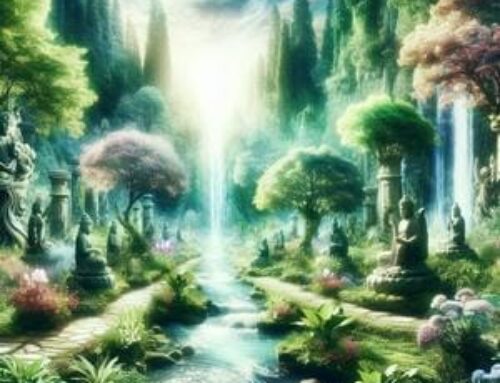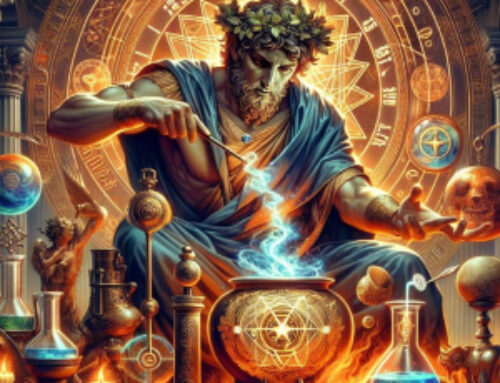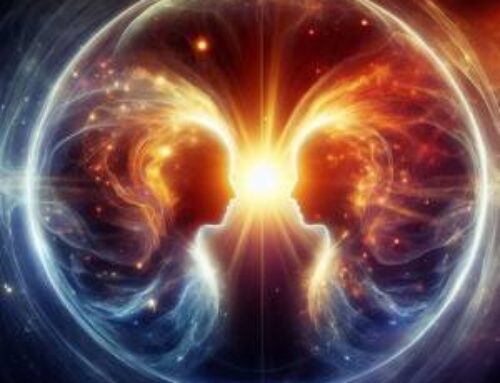Contents
- 1 In recent years, Kabbalah has become a societal trend, even making appearances in tabloid press. However, far from being a mere popular trend, the true essence of Kabbalah lies beyond the contemporary mindset. So, what exactly is Kabbalah? Dive into this beginner’s guide to unravel the mysteries.
- 2 What is Kabbalah?
- 3 The Enigmatic Bridge to Divine Secret
- 4 The Age of Kabbalah
- 5 A Tradition Transcending Time
- 6 Kabbalistic Books and Scriptures
- 7 Words from This World, Echoes of Another
- 8 The Teachings of Kabbalah
- 9 Decoding Spirituality and Fate
- 10 Kabbalistic Training
- 11 Theoretical Foundations and Practical Mastery
- 12 Tradition and The Tree of Life
- 13 A Symbolic Blueprint of Existence
In recent years, Kabbalah has become a societal trend, even making appearances in tabloid press. However, far from being a mere popular trend, the true essence of Kabbalah lies beyond the contemporary mindset. So, what exactly is Kabbalah? Dive into this beginner’s guide to unravel the mysteries.
What is Kabbalah?
The Enigmatic Bridge to Divine Secret
At its root, the word “Kabbalah” (Hebrew: QBL, Kibel) means “to receive.” Historically, this doctrine was passed down orally, with the divine being the ultimate revealer of these kabbalistic secrets. Interestingly, God often conveys his words through instruments – high initiates of the Kabbalah – serving as bridges.
All is driven by the Divine Will. If God wills that a student is to receive certain parts of the kabbalistic tradition, it will inevitably happen. The student will meet a teacher, unveiling the truths they are destined to receive.

The Age of Kabbalah
A Tradition Transcending Time
Though the kabbalistic texts were written before the birth of Christ, their teachings trace back even further. Even if the written words are only known for the last 2,000 years, the tradition behind them is significantly older.
Kabbalistic Books and Scriptures
Words from This World, Echoes of Another
Some of the most renowned kabbalistic writings include the Sepher Zohar, Sepher Yetzirah, Sepher Bahir, and the Torah (the Old Testament of the Bible). A passage from the Sepher Yetzirah, the Book of Creation, encapsulates a core Kabbalah teaching:
“The ten ineffable Sephiroth have ten vast regions; boundless in the beginning and endless; an abyss of good and evil; boundless height and depth; boundless to the East and West; boundless to the North and South, and the Lord, the only God, the true King, rules over all from his holy dwelling, forever and ever.” (Sepher Yetzirah/ W.W.Westcott).
The Bible stands as the most magnificent compilation of kabbalistic wisdom. Every word is meticulously chosen, every letter significant, as God created the world according to the Torah’s laws. Kabbalistic texts use metaphorical language, urging readers to look beyond the literal.
The Teachings of Kabbalah
Decoding Spirituality and Fate
For many, the Bible is a mystifying book. Even priests, bishops, and academic theologians barely scratch the surface with their interpretations. However, the study of Kabbalah provides a gateway to the Bible’s spirituality. This esoteric doctrine remains hidden, accessible only beyond ordinary senses. The true teachings of Kabbalah can only be passed down through initiations into its mysteries. Interestingly, Kabbalistic teachings merge with the New Testament, shedding light on the coded messages within the Bible and guiding us towards realizing providence.
Kabbalistic Training
Theoretical Foundations and Practical Mastery
Kabbalistic education consists of both theoretical and practical training. Theoretically, students explore numerical mysticism, teachings about letters, different realms, and creation itself. Once a student demonstrates dedication and meets ethical standards, they are introduced to practical Kabbalah. This involves deep meditation, prayer, and theurgy (acting as God does – employing symbols and words of power). As the student progresses, they undergo personal refinement, making them more receptive and attuned to meditative experiences.
Tradition and The Tree of Life
A Symbolic Blueprint of Existence
Oral tradition claims that Abraham received and passed down certain aspects of Kabbalah. This tradition remains hidden within biblical texts. It’s nearly impossible to grasp Kabbalah’s light without proper training. Even Jesus, to whom the main works of the New Testament are dedicated, made kabbalistic references. For instance, the “Lord’s Prayer” follows the rules and alignments of the Tree of Life.
The Tree of Life is Kabbalah’s central symbol, illustrating the tapestry of human and cosmic life. It reflects both microcosmic and macrocosmic realities. The Tree of Life is divided into columns and triads, representing the interplay of polar forces in God’s creation. This tree has ten levels called “Sephiroth,” with 22 connecting paths linking these spheres. Each path corresponds to a Hebrew letter, and each Sephirah represents a unique expression of certain forces.
The Tree of Life symbolizes the divine blueprint and highlights how the divine manifests to humans. Few symbols reveal as many hidden laws as this iconic diagram.
For those intrigued by the depths of Kabbalah, as taught in Western mystery traditions, the Hermetic Academy offers exclusive courses. Immerse yourself in advanced teachings accessible to anyone genuinely seeking higher life truths.





